
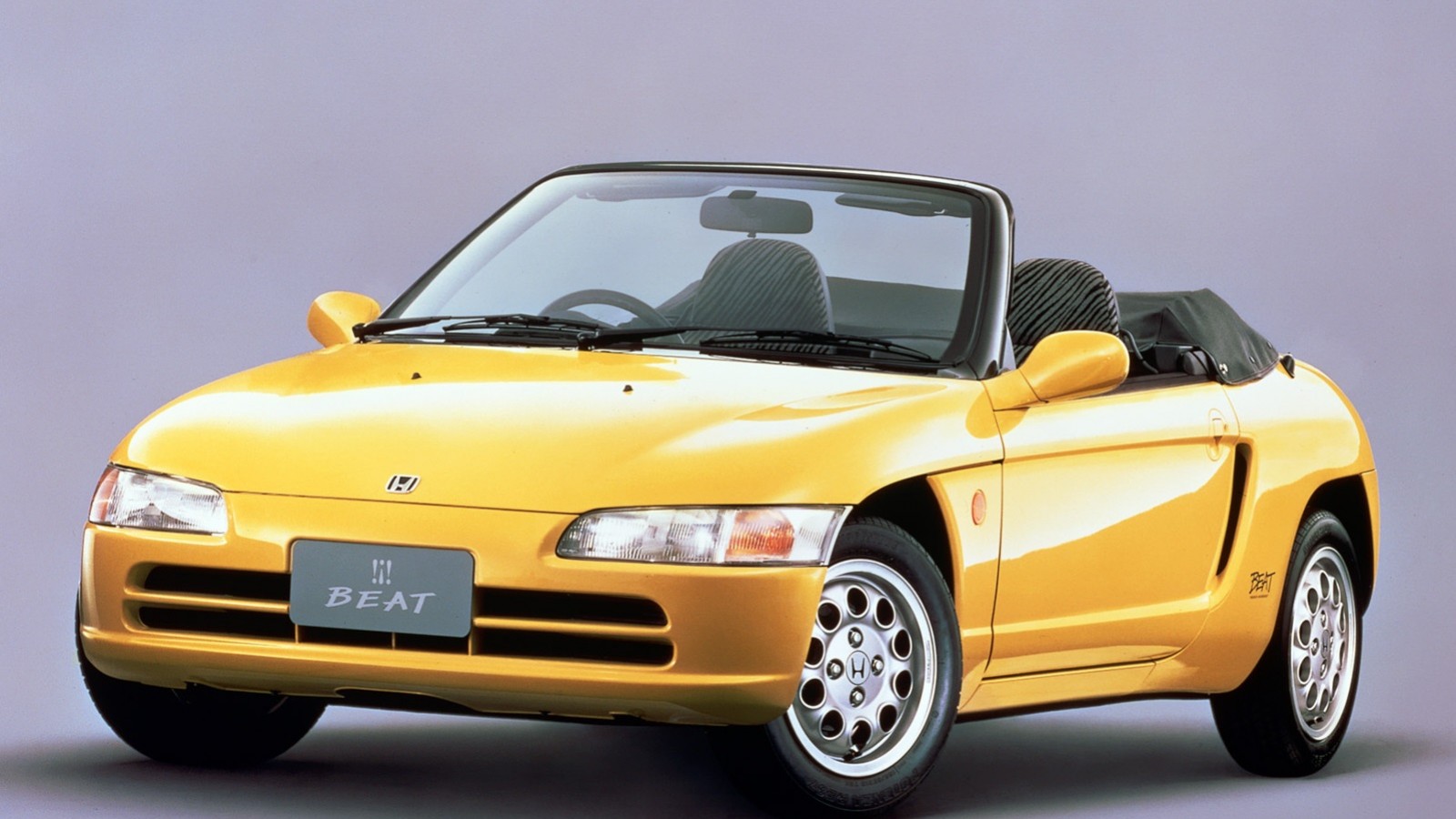
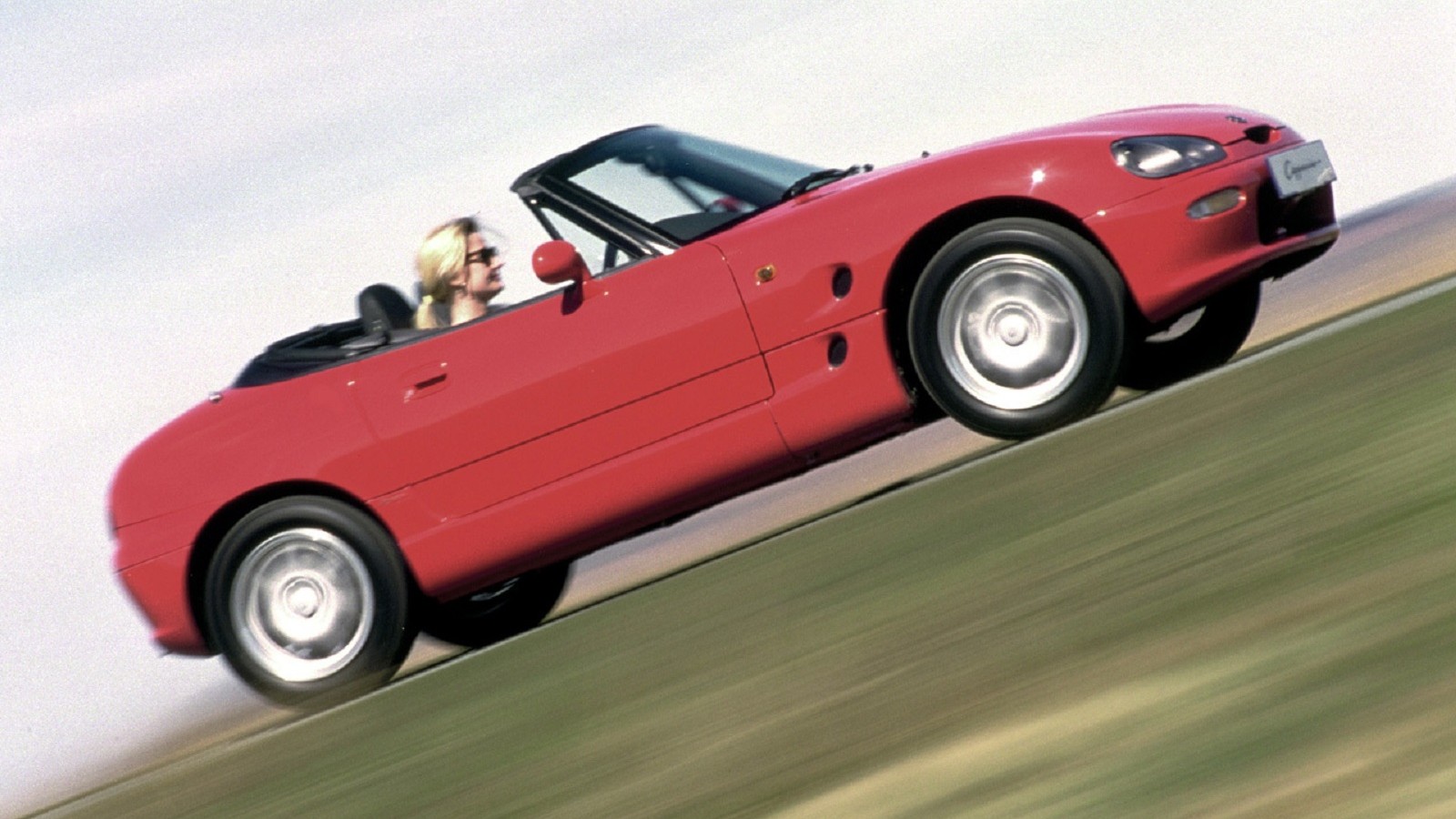
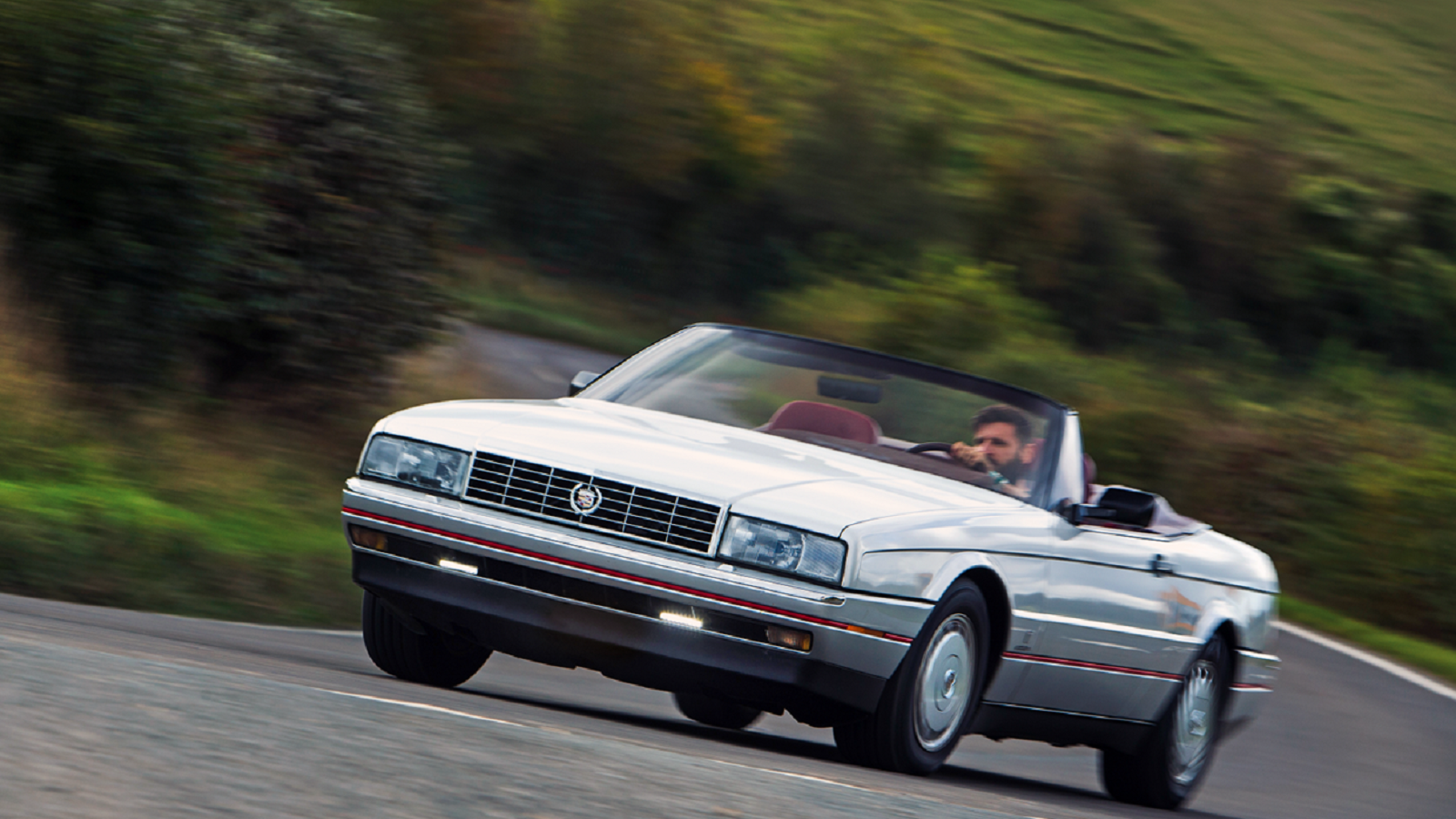
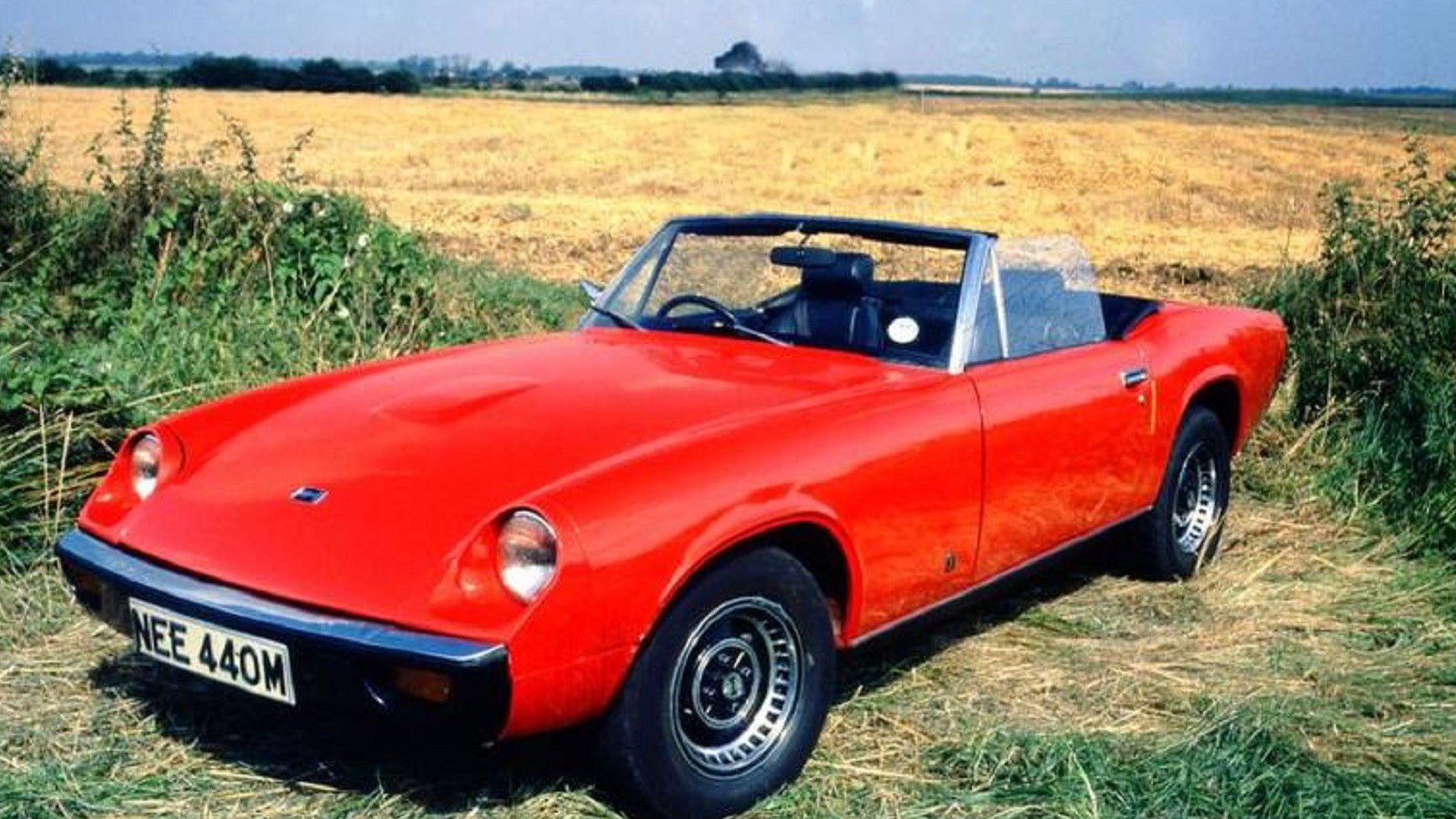

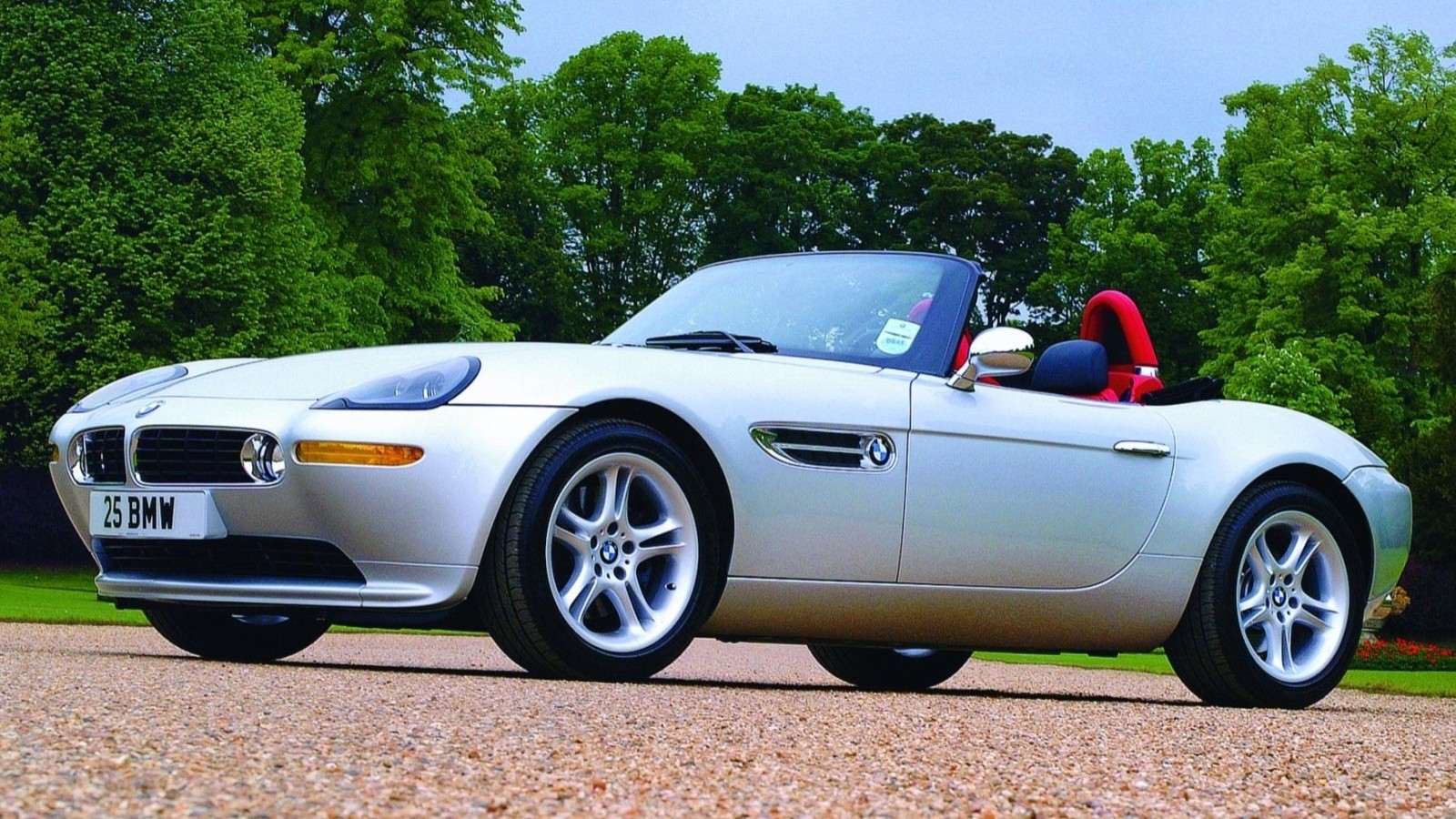
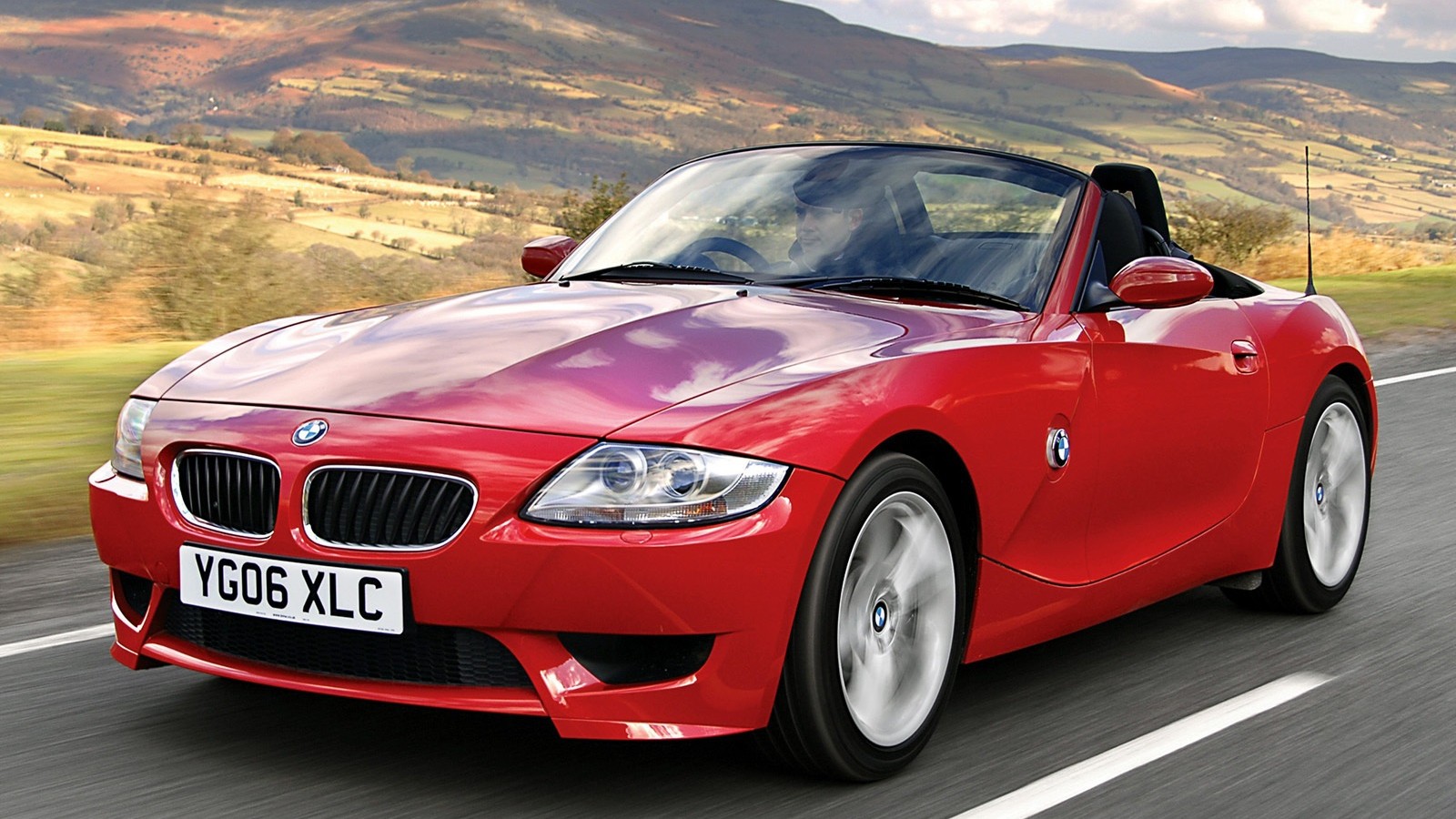
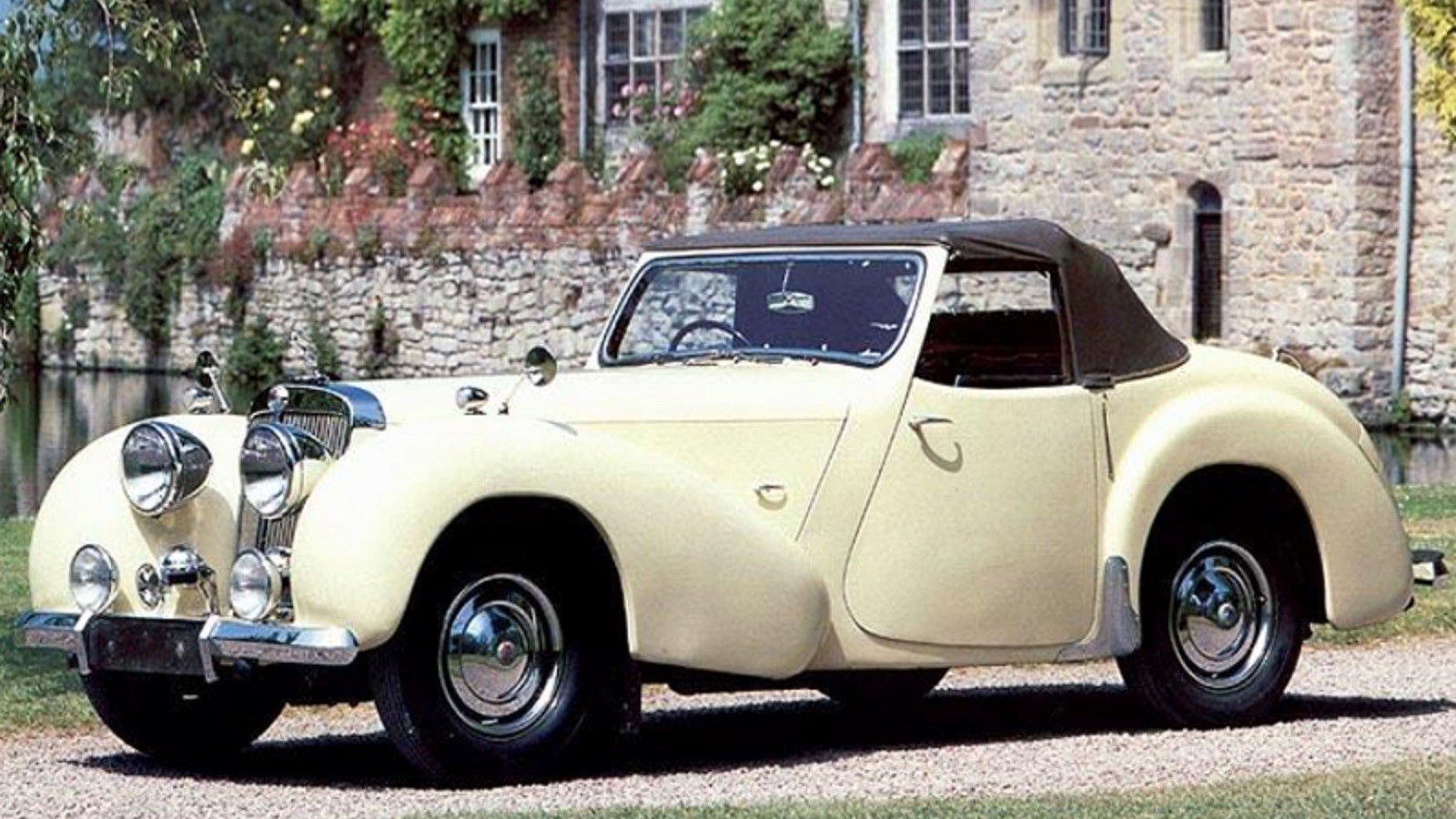

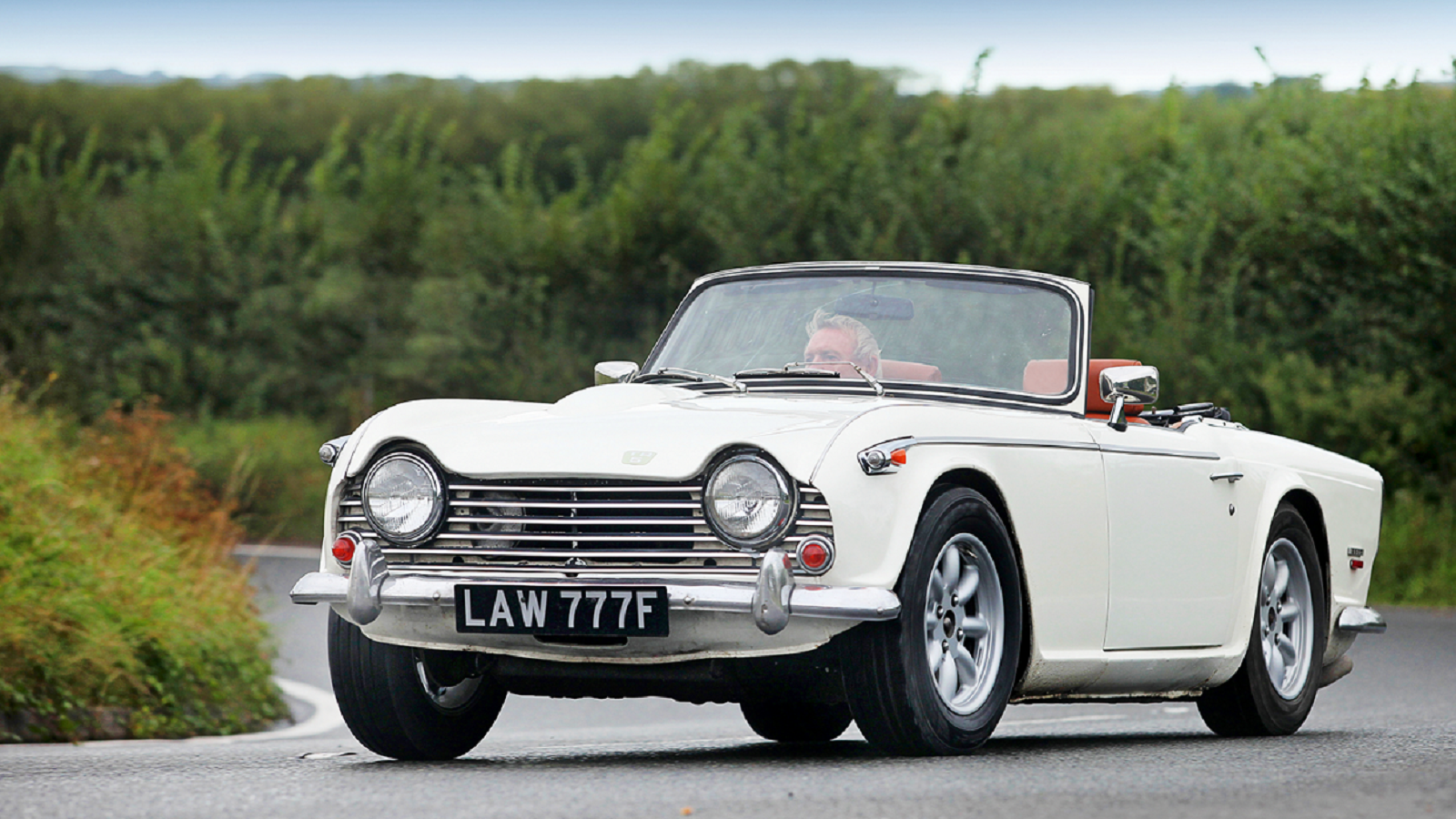
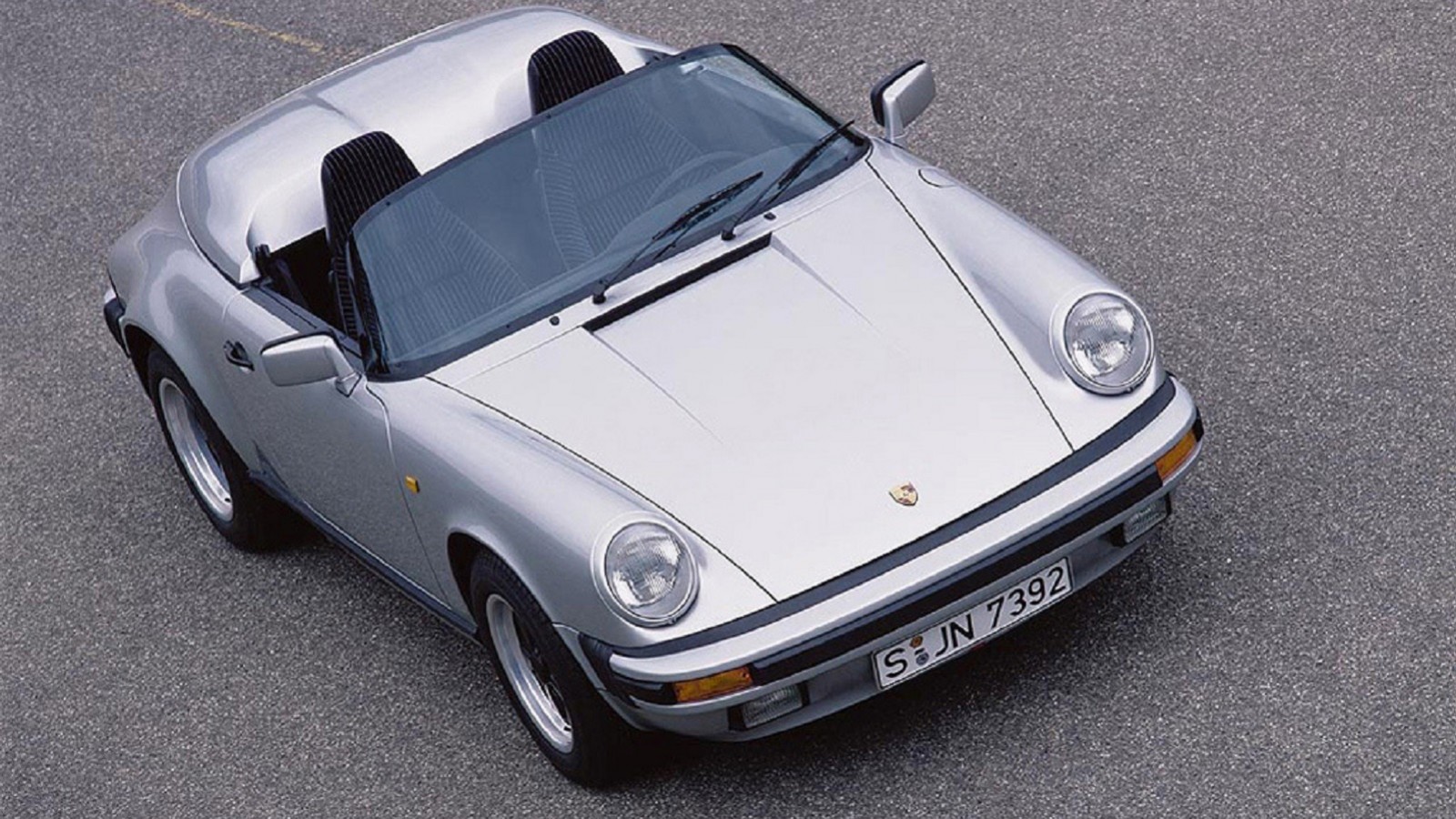
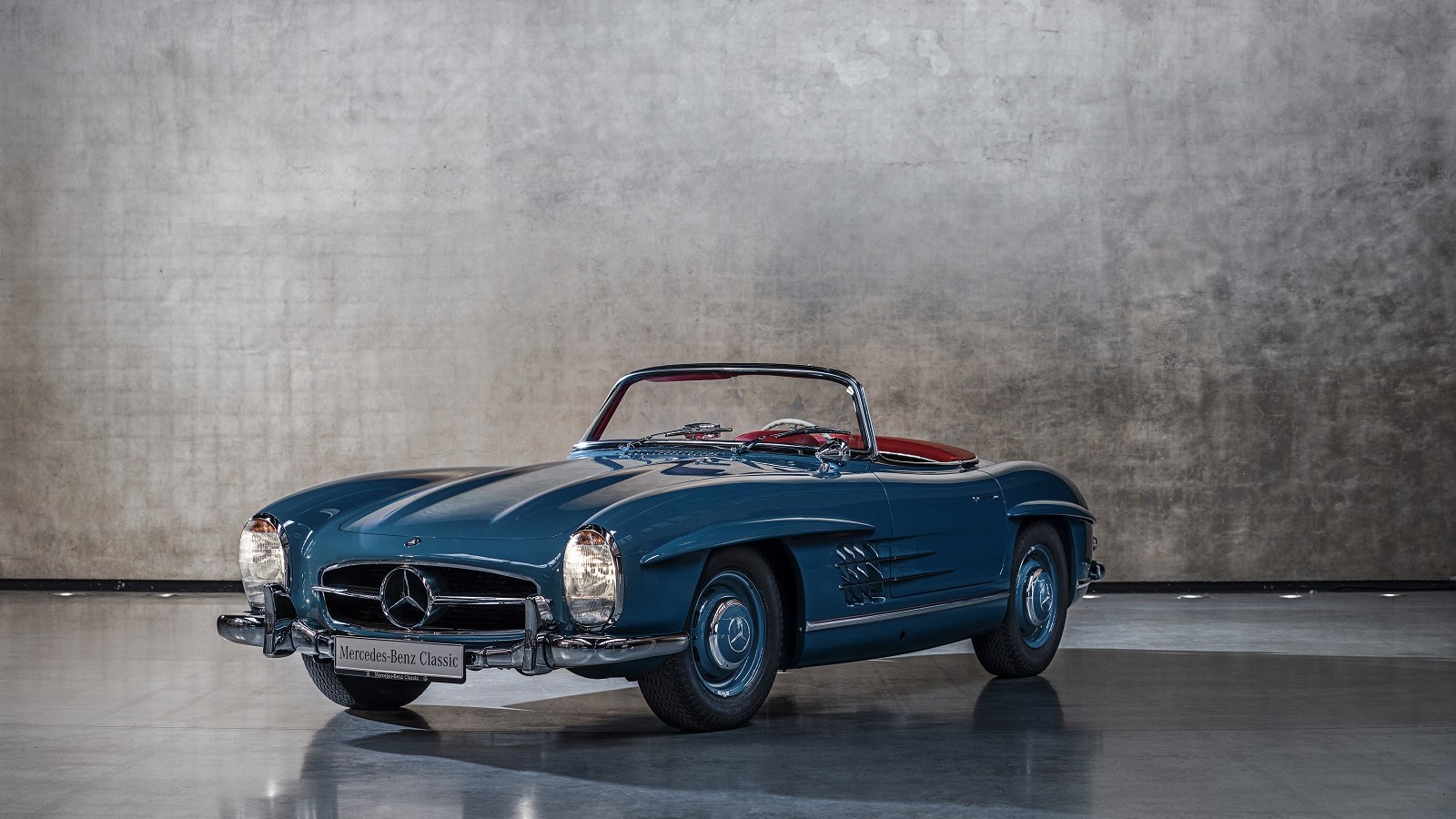
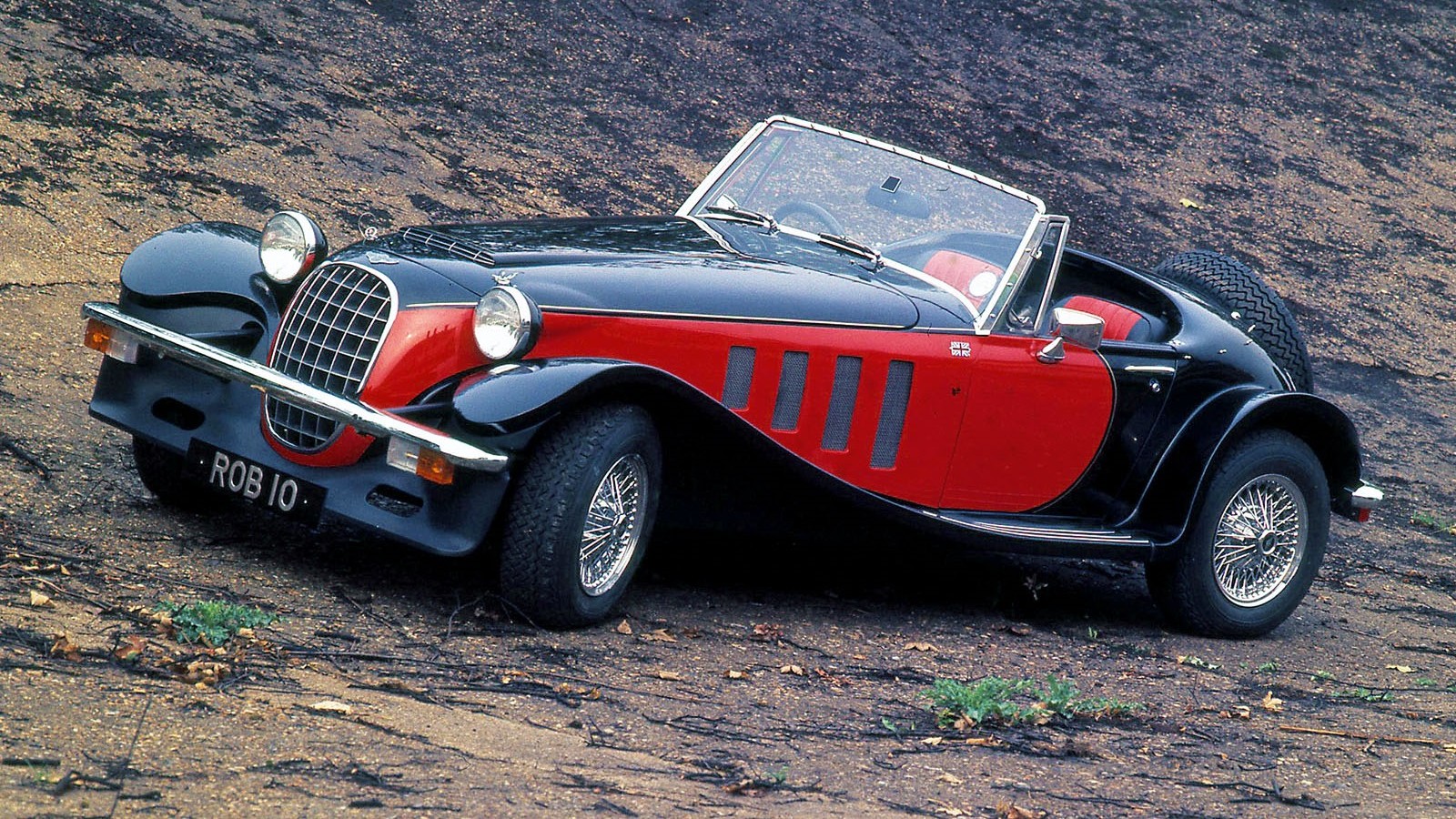

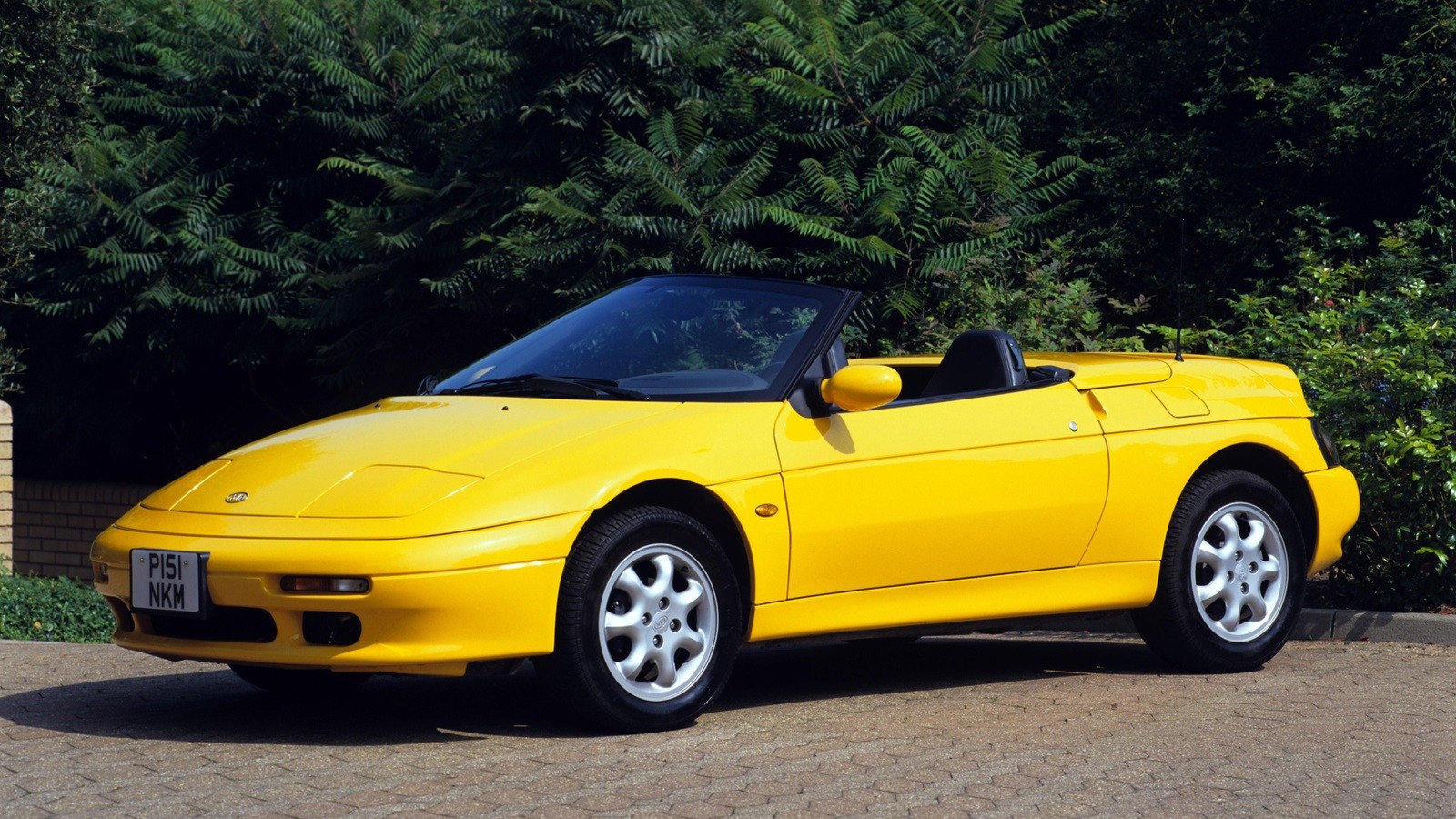
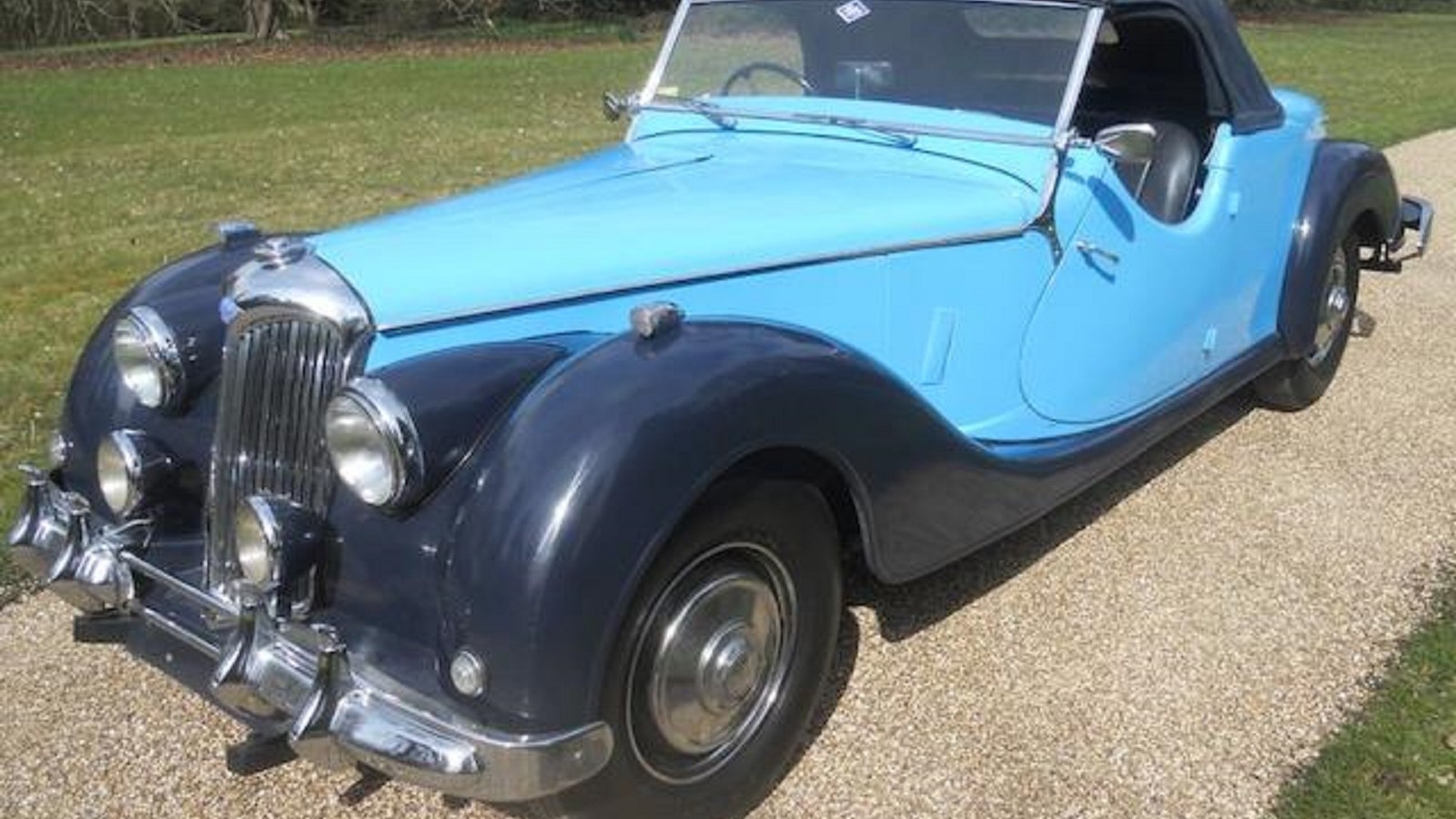
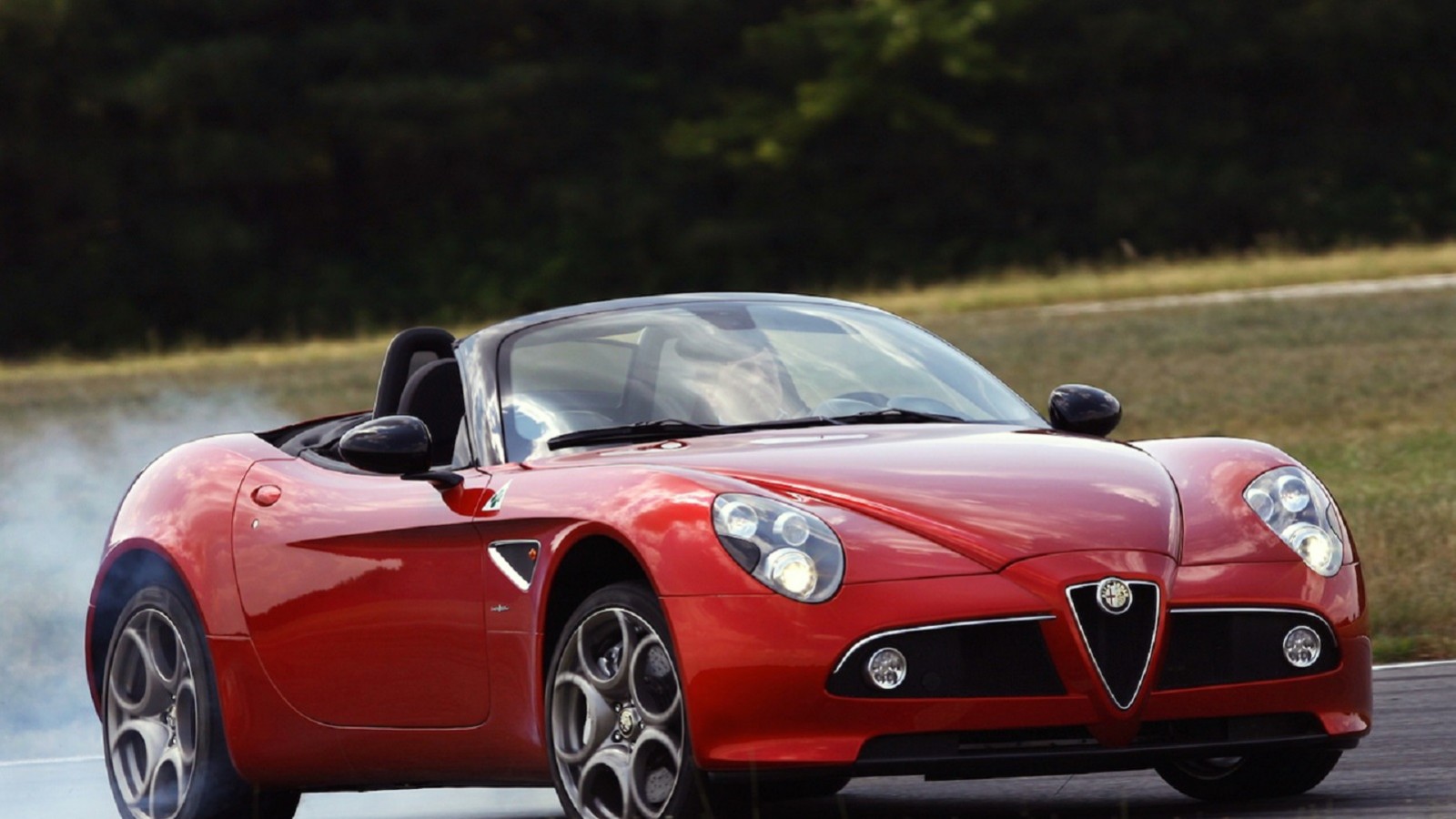


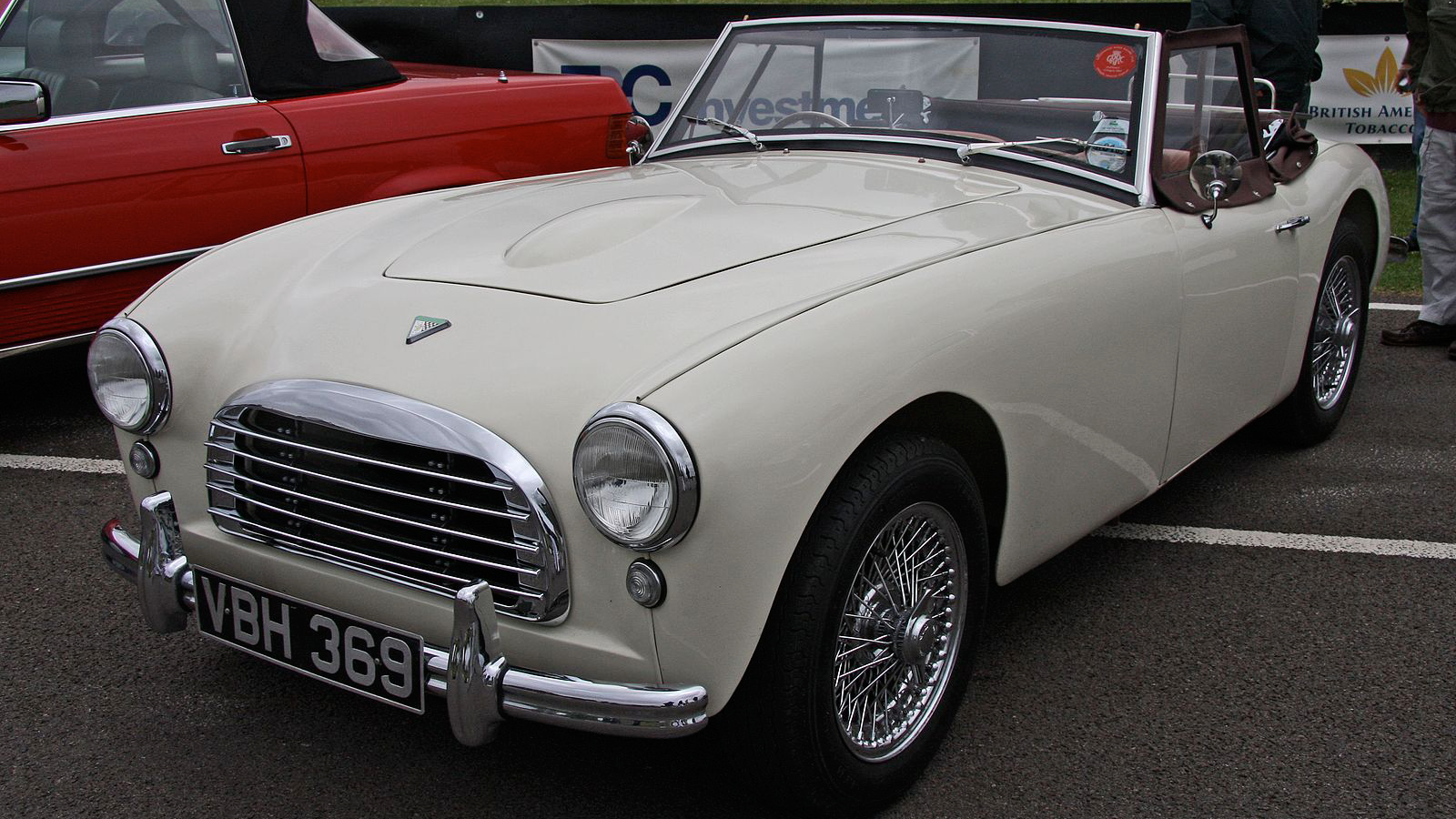
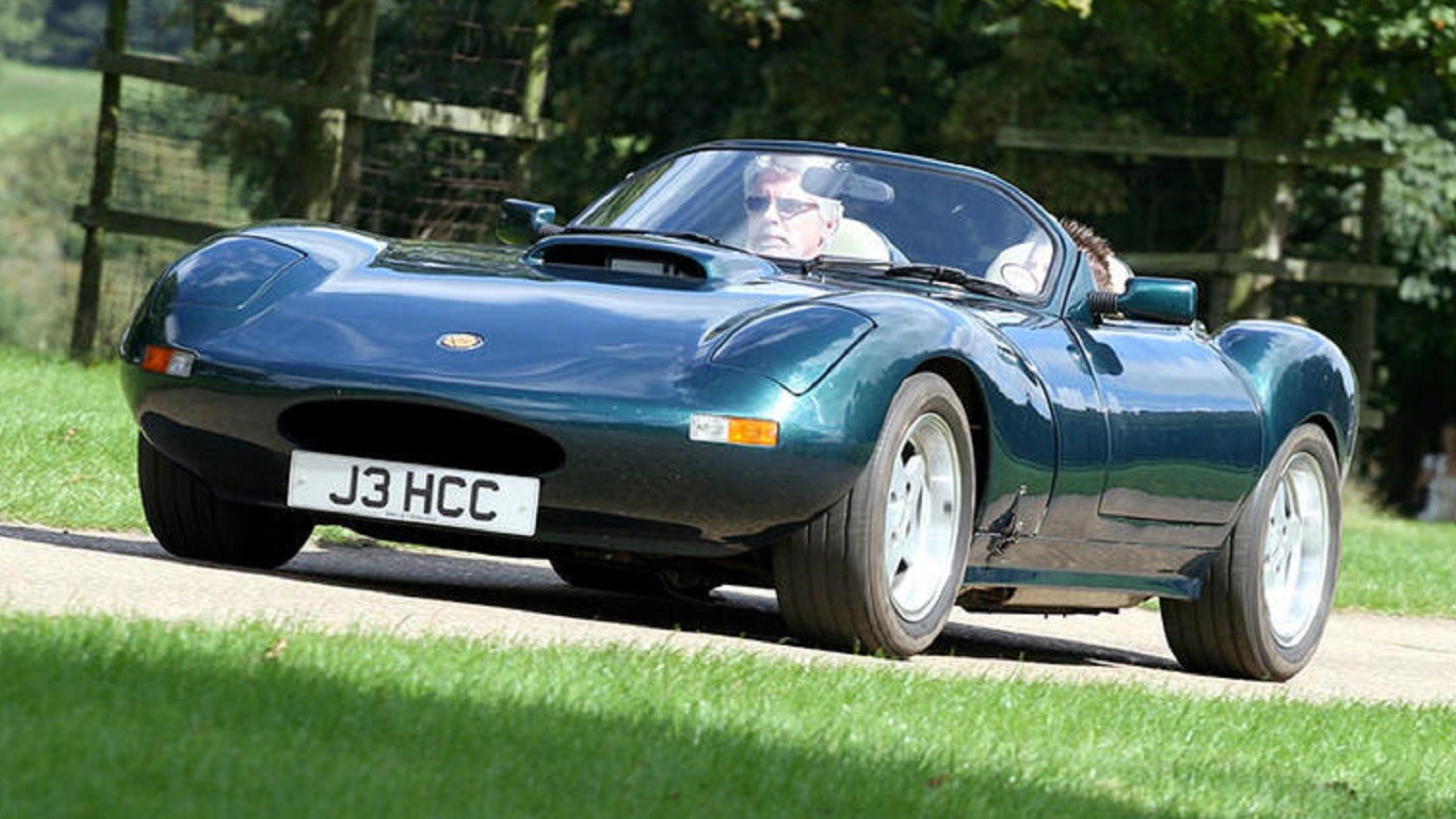
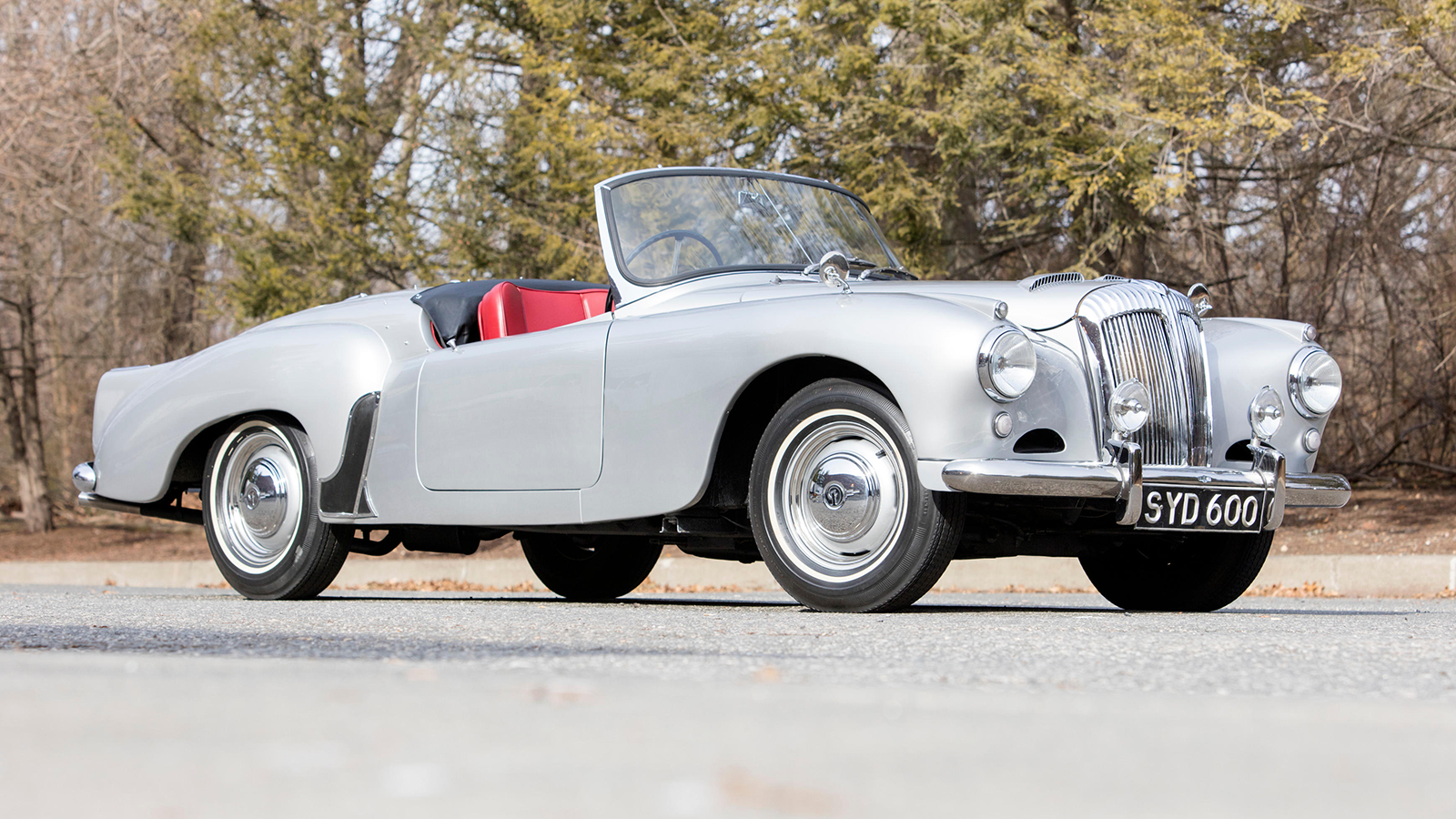
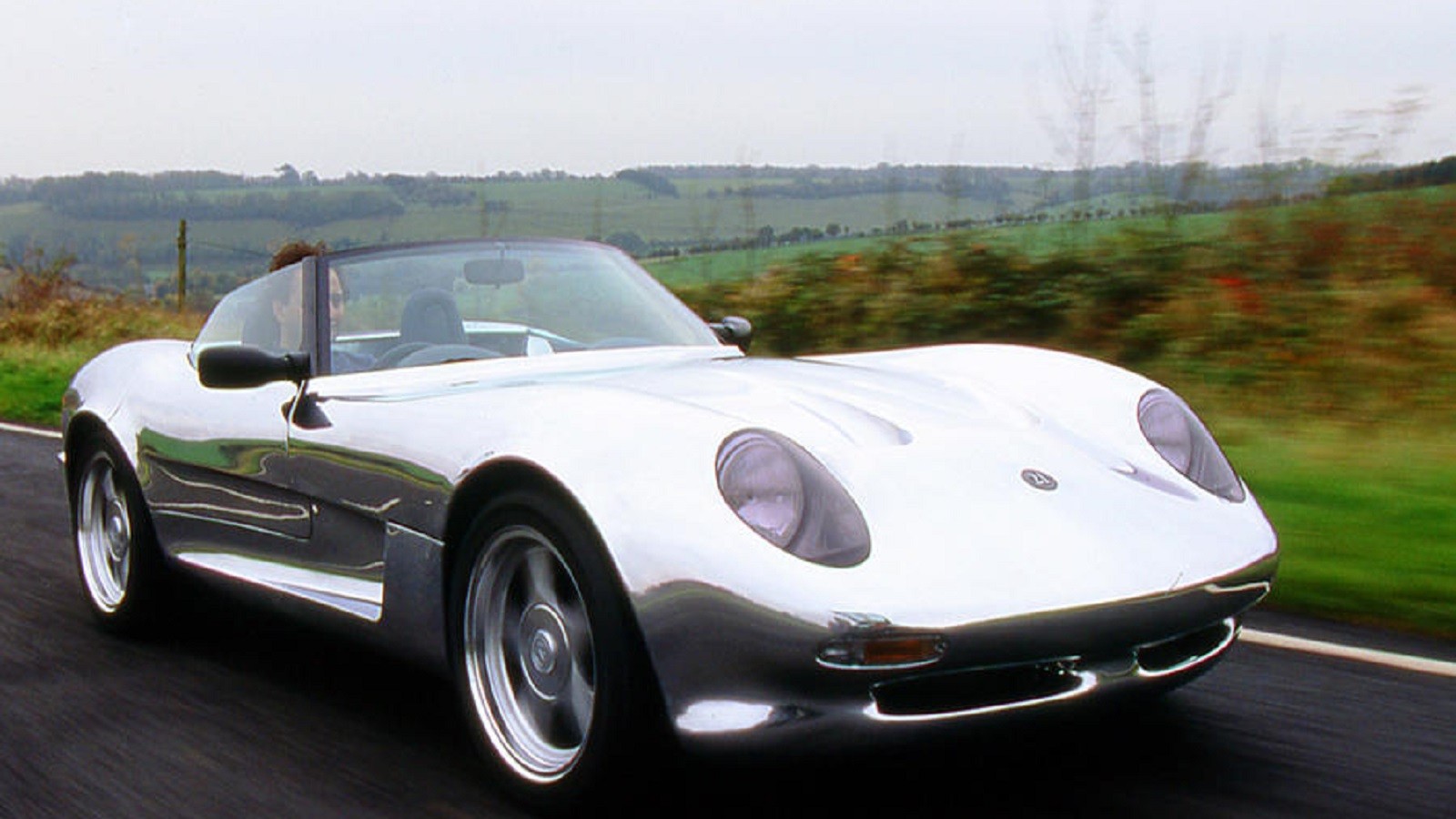
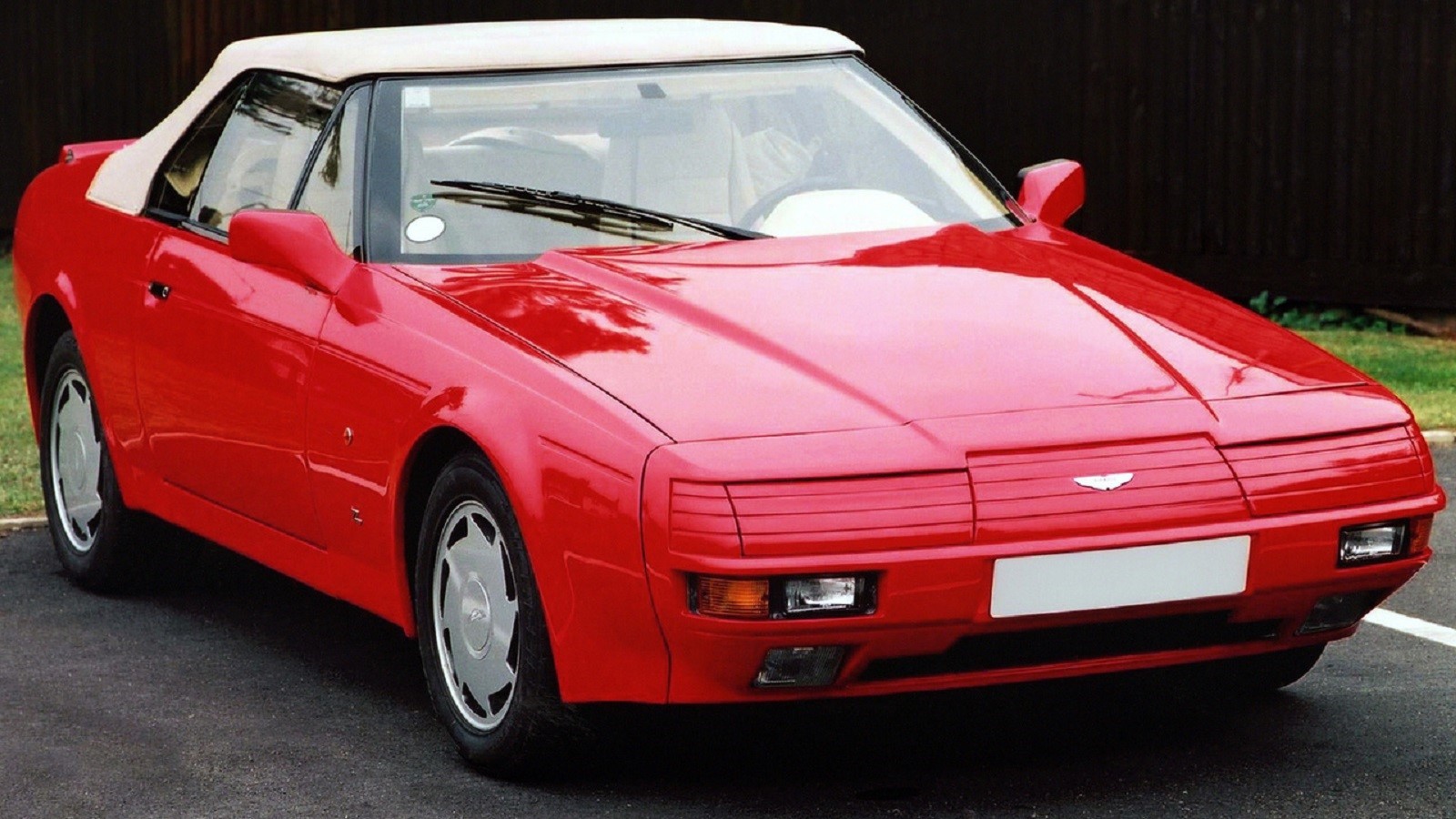
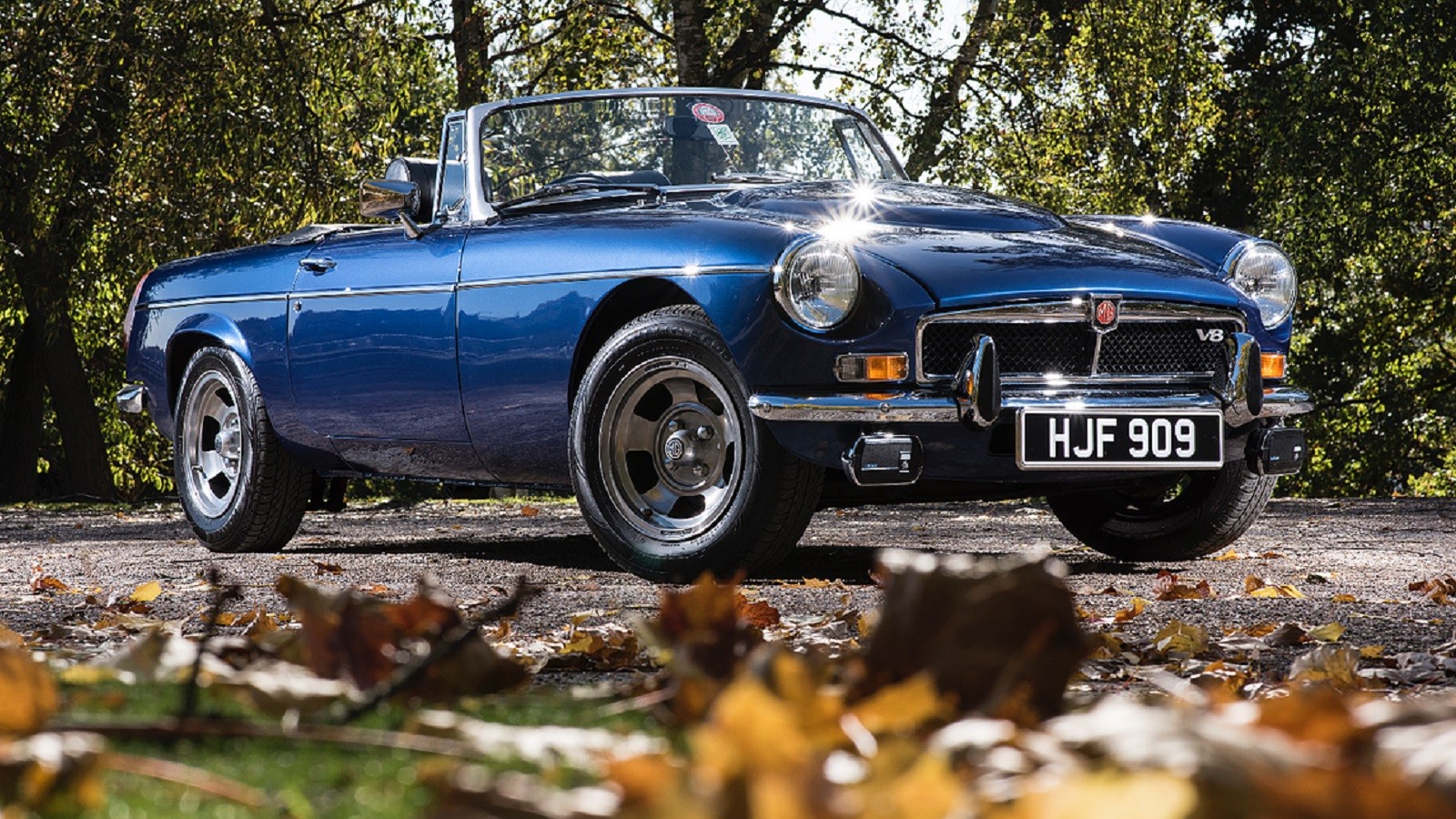
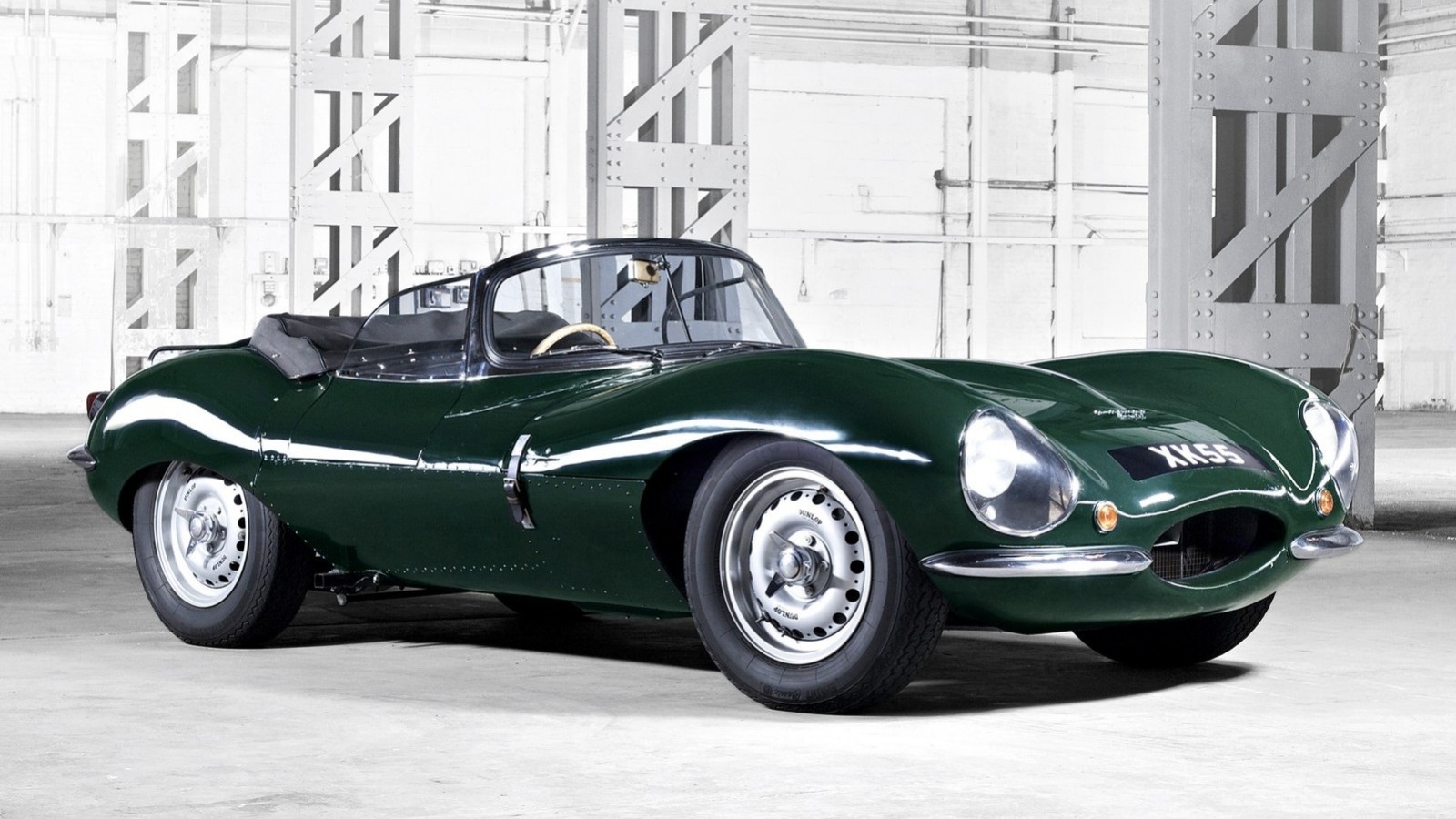
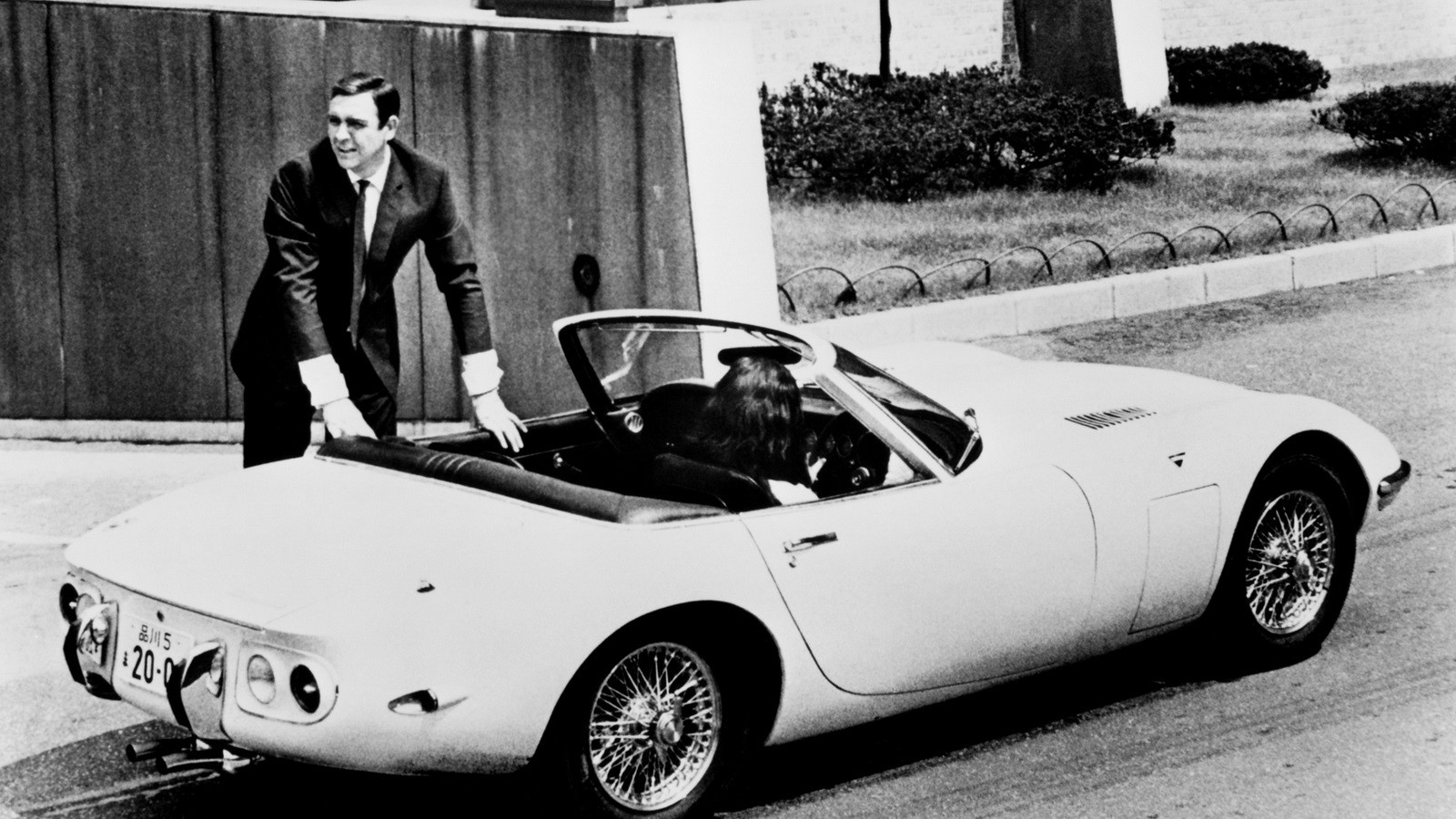
When did you last see one?
Not every drop-top goes on to enjoy MGB or Mazda MX-5 levels of sales success.
Some are destined for rarity due to any number of factors, such as their price when new or the unique circumstances surrounding their creation.
Here’s our pick of the lesser-spotted classic roadsters, all of which were built no later than 2010.
1. Honda Beat: 33,892
Japan’s kei car legislation was intended to create space-efficient small cars for city use, but car makers couldn’t help subverting the rules with the likes of the Honda Beat.
It met the criteria with its footprint and 656cc three-cylinder engine that revs to 8100rpm, but the two-seat roadster body gave it an appeal way beyond most kei cars.
Honda sold a total of 33,892 Beats between 1991 and 1996, with around two-thirds of these being in the first year as Japanese buyers rushed to enjoy something different. Many have since been imported to the UK, where the Beat has a dedicated following.
Production figure supplied by Honda
2. Suzuki Cappuccino: 28,010
Similar to the Honda Beat, the Cappuccino was Suzuki playing with Japan’s size-based kei car tax rules.
Suzuki’s car was also a two-seat roadster, but a more traditional offering than the mid-engined Honda, so the Cappuccino was front-engined and rear-drive with a turbocharged 657cc motor.
Unlike the Beat, Suzuki officially imported the Cappuccino to the UK, with 1110 sold here with a choice of silver or red paint. A mere 72 found homes across the rest of Europe.
Production figure supplied by Suzuki
3. Cadillac Allanté: 21,430
The Cadillac Allanté could have earned frequent flyer miles thanks to its build process. Bodies were constructed by Pininfarina in Italy before being flown in specially converted Boeing 747s, 56 bodies at a time, to Detroit in the US for final assembly.
This added to the cost of the Allanté, which struggled to find favour with luxury roadster buyers in the US in the face of competition from the Mercedes-Benz SL.
In the end, just more than 21,000 were built, though production peaked in the final year in 1993 with the arrival of the Northstar V8 engine.
Production figure supplied by GM
4. Jensen-Healey Sports: 10,498
If total sales of more than 10,000 cars sounds reasonable for the Jensen-Healey Sports, it deserved to sell many times that number.
The combination of good looks and handling allied to a zingy Lotus-supplied 2.0-litre engine should have been irresistible.
However, buyers in the US did resist, not helped by mediocre early build quality and patchy supply issues caused by a shortage of engines from Lotus. In the end, the Healey name died with this roadster and its even rarer GT coupé sibling.
Production figure supplied by the Jensen Healey Preservation Society
5. BMW Z1: 8000
BMW only ever intended this roadster as a development vehicle for its new Z axle rear suspension for the forthcoming E36 3 Series range.
Yet it was too tempting not to produce a show car based on the Z1 platform and, when it was unveiled at the 1987 Frankfurt Motor Show, orders flowed in.
Production was deliberately capped at 8000 and BMW had little trouble shifting the Z1 thanks to its striking looks, drop-down doors, and a steel and carbonfibre body that was way ahead of its time.
Production figure supplied by BMW
6. BMW Z8: 5703
Our second BMW is the Z8, a car that was out of step when new. While the M5 saloon that it was based on was lauded by all, the Z8 was dismissed for its retro styling.
There was nothing wrong with its performance, though, thanks to its 400bhp 4.9-litre V8 motor. Still, sales were modest, by BMW standards.
Now, the Z8 is appreciated for its rarity and the boldness of BMW in building such a car. That, and an appearance as a James Bond car, have all contributed to it becoming a vital addition to many car collections.
Production figure supplied by BMW
7. BMW Z4M: 5070
Yes, a third BMW on the bounce, but we promise it’s the last.
The Z4M Roadster already enjoys a blossoming classic following as a car that draws together so many defining traits of what makes a great roadster. Performance is not in short supply thanks to the 338bhp 3.2-litre engine and six-speed manual gearbox from the contemporary M3, while the handling had more than just a raw edge to keep drivers fully awake and engaged.
Then there’s its relative rarity. With only 5070 models built by BMW’s own reckoning (795 more than its coupé sibling), you’re not likely to see another out and about.
Production figure supplied by BMW
8. Triumph Roadster: 4501
Triumph built its Roadster in 1800 and 2000 forms, which combine to give a total production of 4501 cars.
The earlier 1800 is the more numerous, with 2501 built, and it’s identified by having its column gearchange on the right-hand side of the steering column where the 2000’s is on the left.
Neither was an out-and-out sports car in its day, but the Triumph sold steadily between 1946 and 1949, and it was the starting point for the company’s big-selling TR line.
Production figures supplied by the Triumph Roadster Club
9. Singer SM Roadster: 3440
Singer’s roadster models were well regarded pre-war and they were brought back to warm over sales in the immediate post-war period.
The SM Roadster of 1951 retained much of that earlier design, but came with a 1.5-litre engine that had 48bhp.
Up against the likes of MG and Triumph TR models, the Singer was slow, and even the later 58bhp engine did little to resolve this. As a result, sales were equally sluggish and Singer managed to shift only 3440 during its four-year run.
Production figure supplied by the Singer Owners’ Club
10. Triumph TR5: 2947
The TR5 is the Holy Grail for many Triumph sports car fans, because it was only in production for a year and output totalled 2947.
A distinction has to be drawn between the TR5 and its more abundant TR250 sister, which was an emissions-tuned version for the US market. As a result, the TR5 has a 150bhp engine, while the TR250 gets by with just 104bhp.
With the TR6 already waiting in the wings, the TR5 didn’t have time to achieve more sales, even though it was the first TR model with a genuine 120mph top speed.
Production figure supplied by the TR Register
11. Porsche 911 G series Speedster: 2103
The Speedster name goes right back to the early days of Porsche, so it’s little surprise the company decided to cash in during the heady days of the late 1980s.
In 1988, Porsche revealed the 911 Speedster, which was based on the Carrera with its 228bhp 3.2-litre engine. It had a cut-down windscreen and manually operated hood that stowed under a large rear hump.
Out of the 2103 Speedsters produced of this generation of 911, only 161 were made with the slimmer standard Carrera body. The rest were ordered with the turbo’s broader rear wheelarches.
Production figure supplied by Porsche
12. Mercedes-Benz 300SL Roadster: 1858
Mercedes built 1400 examples of its 300SL ‘Gullwing’ coupé and followed it up with the Roadster that used the same mechanical parts but in an easier-to-use package.
Not only was the Roadster less tricky to get in and out of, later cars were the first Mercedes to have disc brakes on all four wheels.
With a proper boot and simple-to-operate hood, the Roadster was more practical, too.
Production figure supplied by Mercedes-Benz
13. Panther Lima: 897
Panther had form in building retro-styled roadsters in small numbers, including its Ferrari-engined FF model.
The Lima was a much more business-minded proposition to rival Morgan, using a Vauxhall Magnum floorpan. The body was glassfibre with MG Midget doors, which looks much better than it sounds.
The Lima did reasonably well for Panther, notching up nearly 900 sales in Series 1 and 2 guises.
A switch to Ford power ushered in the Kallista replacement, which managed 1437 sales before SsangYong bought the rights and built a small number in Korea.
Production figures supplied by The Panther Car Club Ltd
14. Jowett Jupiter: 825
The Jupiter was Jowett’s only attempt at a sports car and it showed considerable potential.
The Javelin-based chassis delivered excellent handling and the 1.5-litre flat-four engine a decent turn of speed. This latter point was improved with a more powerful 63bhp engine in early 1953.
Plenty of impressive outings on track and in rallying showed the Jupiter had the ability, but the road car was a bit too heavy and expensive in the face of competition from the likes of the Triumph TR2. As a result, the Jupiter sold in only small numbers.
Production figure supplied by the Jowett Car Club
15. Kia Elan: 792
Lotus had two stabs at selling its front-wheel drive Elan, resulting in 3855 under General Motor’s stewardship and a further 800 turbo-only S2s while owned by Bugatti. The rights and tooling were then snapped up by Kia to give itself an instant bit of glamour for its Korean home market.
Kia didn’t quite have Lotus’ dab hand at creating sports cars, so the Kia Elan ended up with a 40mm increase in ride height that scuppered the handling. There was also a humdrum 1.8-litre engine with 135bhp from Kia’s parts bin that blunted acceleration.
No surprises the Kia Elan tanked when it went on sale in 1996, with 792 sold in total and only two in its final year of production in 2000.
Production figure supplied by Kia
16. Riley RMC Roadster: 507
Spotting a Riley RMC Roadster on post-war UK roads would have been a special event. This open-top was only built between 1948 and 1950, with most cars being shipped to the US. It was only offered for sale at home from 1949 and it was expensive.
The high price not only bought rarity, it also meant a near-100mph pace, thanks to a 100bhp 2443cc four-cylinder engine.
Right-hand drive RMC Roadsters also benefited from a floor-mounted gearlever in place of the column shift on LHD models.
Production figure supplied by the Riley Motor Club
17. Alfa Romeo 8C Spider: 500
Alfa Romeo followed its limited-run 8C Competizione coupé with the 8C Spider in early 2008. Using the same chassis and engine as the fixed-roof car, the Spider came with a windscreen reinforced by a carbonfibre hoop.
It also boasted the lightest canvas soft-top of any car on sale at the time of its launch.
There was no trouble finding buyers for the 500 8C Spiders made thanks to its 450bhp 4.7-litre V8, which gave the 1590kg Alfa a top speed of 181mph.
Production figure supplied by Alfa Romeo/Stellantis
18. Mercedes-Benz SLR McLaren Roadster: 500
The direct result of Mercedes-Benz and McLaren competing together in Formula One, the SLR was badged as a Mercedes but built in Woking by McLaren.
It started life as a coupé in 2003 and the Roadster was added to the range in 2007 with a roof that was manually unlatched and then electrically folded down in 10 secs.
The Roadster 722 S arrived in 2009 and only 150 were produced in addition to the standard Roadster, but even rarer still was the Stirling Moss edition with only 75 built. This model had no windscreen and twin roll hoops inspired by Stirling Moss and Denis Jenkinson’s 1955 Mille Miglia-winning 300SLR.
Production figures supplied by Mercedes-Benz
19. Nash-Healey: 304
Built at Healey’s Warwick factory, the Nash-Healey was never offered for sale in the country of its manufacture. Instead, they were all bound for the US where its six-cylinder engines originated from.
The motors were 3.8- or 4.1-litre units, though power was more of the lazy cruising variety than sporting.
The later Farina-styled models had a one-piece windscreen and headlights inset into the grille. A handful of fixed-head versions were also produced among the 151 Farina-made cars, though it’s uncertain how many.
Production figures supplied by the Austin-Healey Club
20. Swallow Doretti: 250
The Swallow Doretti was much more than a posh Triumph TR2. Yes, the engine, gearbox, suspension, steering and brakes all came from the Triumph, but the chassis and body were bespoke, and the engine was mounted some seven inches further back in the frame.
Swallow came up with a handsome two-seater body, with aluminium outer panels, full doors and wind-up windows in place of the TR2’s cutaway sides.
It made the Doretti into a fine tourer, even if it was a little slower off the mark than its Triumph donor. The shortfall in performance, coupled to a higher price than the rugged TR, dealt hard blows to the Swallow’s sales chances and production ceased in 1955.
Production figure supplied by the Swallow Doretti Owners’ Club
21. Ginetta G33: 96
Famously sketched out on a tablecloth in a pizza restaurant, the Ginetta G33 took the basics of a G27 and shoehorned in a 3.9-litre Rover V8. Hey presto, the company had a TVR rival and, with a few styling tweaks such as the twin cowls behind the headrests, a very handsome one, too.
With 200bhp from the engine and little weight to shift, the G33 covered 0-60mph in 5.0 secs and had a 150mph top speed.
All this for less than £19,000 at its launch made the G33 very appealing, but the company ran into cashflow problems that quickly spelled the end for the G33 just as a 2.0-litre Cosworth-powered model was being developed.
Production figure supplied by the Ginetta Owners’ Club
22. Daimler Century Roadster: 65
A drophead coupé version of Daimler’s Conquest Century found favour with its genteel customers, but the sportier Century Roadster left them unmoved.
Slightly awkward styling allied to low-cut doors with no wind-up windows was all a bit too raw and sporty, even if the Roadster could top 100mph.
A Century Sports version arrived in 1955 with proper side windows, but it was too little and too late to save this car. In the end, 65 Roadsters were built and just 54 Sports, the latter figure also including a tiny number of fixed-head coupé versions.
Production figures supplied by the Daimler and Lanchester Owners’ Club
23. Caterham 21: 49
Caterham’s logic was impeccable. If its Seven was popular regardless of its open cockpit and minimal wet weather protection, a more refined car with the same performance and handling would be a runaway success.
The idea was sound, but the timing was dreadful, because the 21 was launched right into the unstoppable force that was the original Lotus Elise.
Named to mark Caterham’s 21st year as a car maker, the 21 soldiered on until 1999. Where the Elise went from strength to strength, the 21 faltered despite being great to drive and quick – 0-60mph took just 4.5 secs with the 135bhp 1.6-litre K-Series engine option.
Production figure supplied by Caterham Cars
24. Aston Martin V8 Vantage Volante Zagato: 37
Aston Martin had a pleasant problem to solve with its V8 Vantage Zagato. It had promised to make only 50 cars, with 52 of the coupé finally built. Yet there was still unsatisfied demand, so the solution was to create an open-top Volante model.
The first car shown at the Geneva Motor Show in 1987 was one of the 52 coupés with the top chopped off. Production Volantes had an electrically powered roof and different grille to the coupé’s. Including two prototypes, 37 were made.
Production figures supplied by Aston Martin
25. Costello MGB V8: 35
Ken Costello brought his V8-powered MG conversion to market two years before British Leyland managed with the factory MGB GT V8.
Around 35 Roadsters were converted by Costello, according to figures from mgcostello.com, and early Mk1 models had a glassfibre bonnet bulge to clear the twin SU carburettors. Later cars used lowered inlet manifolds and had a standard bonnet.
Most Costello conversions were carried out on the closed GT. When BL launched the MGB GT V8 at a lower price, it signalled the end of Costello’s conversions.
Production figure supplied by mgcostello.com
26. Jaguar XKSS: 16 + 9
Why 16 plus nine for the total number of XKSS cars built by Jaguar?
The answer is 16 were made originally out of 25 planned before a fire swept through the Browns Lane factory in 1957. Then, in 2017, the company announced it would complete the run using the original chassis numbers and exact copies of the original car.
Those original XKSS cars were made using leftover D-type chassis and a body that had a proper hood and windscreen as a nod to comfort. It might have been slightly more refined than the race car it was based on, but the XKSS still packed a 250bhp 3.4-litre motorsport-bred engine and serious pace.
Production figures supplied by Jaguar
27. Toyota 2000GT Roadster: 2
The Toyota 2000GT Roadster very nearly didn’t exist. If it wasn’t for Bond actor Sean Connery being too tall to fit in the coupé model, there would have been no need to create the open-top version. The Roadster was converted in just two weeks, with two made to help the filming process.
Both 2000GT Roadsters have a hood cover behind the seats, but there was no hood stashed there, or else Connery would not have fitted in the car.
Regardless of this and the fact nobody could buy it, the car’s appearance in You Only Live Twice gave Toyota dealers a huge boost in customer enquiries. Job done.
Production figure supplied by Toyota
